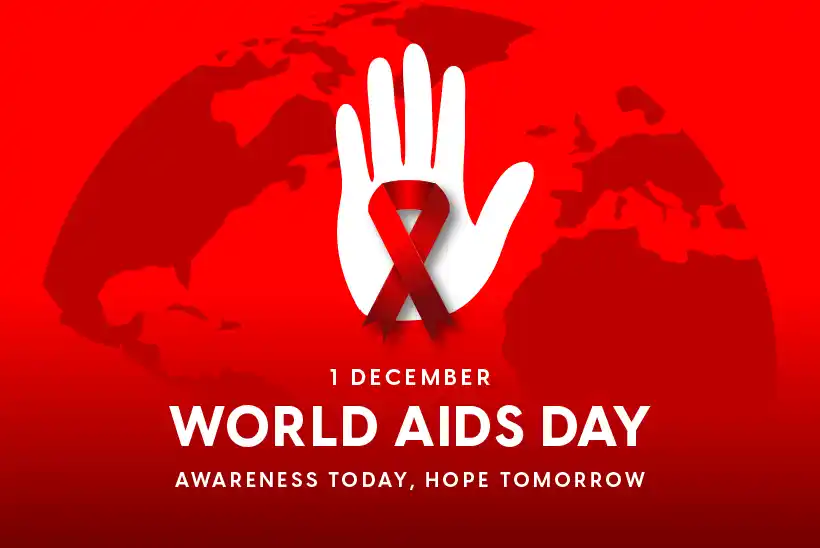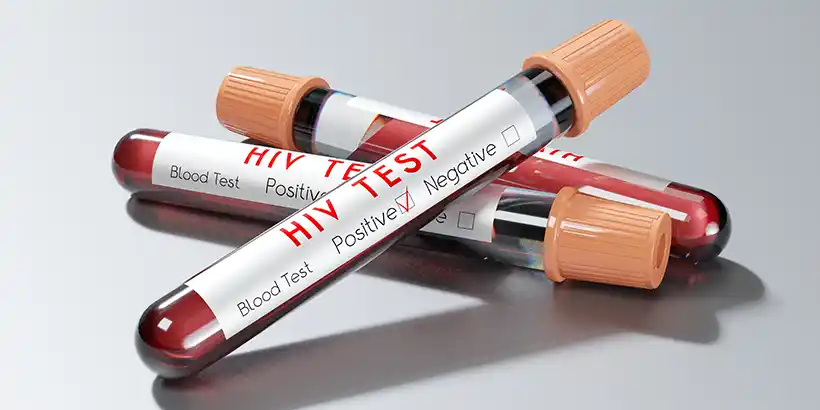
World AIDS Day is observed every year on December 1st. It raises global awareness about HIV/AIDS, honors lives lost to the disease, and advocates for prevention, treatment, and care for those living with HIV. Despite remarkable progress, the fight against the AIDS epidemic continues.
Why Is World AIDS Day Important?
Raising Awareness
World AIDS Day helps spread HIV/AIDS awareness, educates the public, and dispels misconceptions about the disease.
Reducing Stigma
The day works to break down HIV stigma, encouraging people to seek testing and treatment without fear or judgment.
Mobilizing Resources
It inspires governments, organizations, and individuals to fund programs for HIV prevention, treatment, and care.
Empowering Advocacy
World AIDS Day gives a platform to people living with HIV, empowering them to advocate for their rights and access to care.
Progress in HIV treatment and prevention has made the disease seem less prominent in media, but it remains a global health issue. Why don’t we hear much about AIDS anymore?
AIDS Is Treatable, Not Cured
There is still no cure for HIV/AIDS, but antiretroviral therapy (ART) has transformed it into a manageable condition. ART suppresses the virus, preventing progression to AIDS and allowing individuals to live near-normal lifespans.
Innovative strategies like Treatment as Prevention (TasP) ensure that people with undetectable viral loads cannot transmit HIV sexually. This breakthrough has saved millions of lives while reducing new infections.
Prevention Strategies Have Improved
Preventive methods, such as Pre-Exposure Prophylaxis (PrEP), have significantly reduced HIV transmission. PrEP is a daily pill that blocks the virus from establishing itself in the body for those at high risk.
Other prevention efforts, like safe sex practices, clean syringe programs, and regular HIV testing, have also led to a decline in new infections. For example, cities like San Francisco have reported a 51% decrease in new HIV cases since PrEP became widely available.
Less Visible in Media
HIV/AIDS has become less visible in media due to several key factors. Improved treatments, such as antiretroviral therapy (ART), have significantly reduced deaths, shifting public focus away from the disease. Global health crises like COVID-19 have also drawn attention to newer challenges, leaving HIV/AIDS less prominent in discussions. Additionally, declining mortality rates have contributed to the perception that the epidemic is no longer a pressing issue, even though it continues to affect millions, particularly in regions with limited resources and access to care.
Also Read: Teacher Lived 9 Months with Chimpanzee Kidney Transplant

5 Essential Facts About HIV/AIDS
1. HIV vs. AIDS: HIV is the virus that causes AIDS, which is the final stage of infection.
2. Transmission: HIV spreads through unprotected sex, shared needles, or from mother to child during childbirth or breastfeeding.
3. Treatment: Antiretroviral therapy (ART) prevents HIV from progressing to AIDS and helps people live longer, healthier lives.
4. Prevention: Practices like using condoms, taking PrEP, and not sharing needles are crucial to reducing HIV transmission.
5. Global Impact: About 1.5 million new HIV cases are reported globally every year. Sub-Saharan Africa remains the most affected region, with millions still living with HIV.
Honoring Lives Lost to AIDS
World AIDS Day serves as a powerful reminder of the lives lost to AIDS-related illnesses, honoring individuals whose influence brought the HIV/AIDS epidemic into global focus. Icons such as Freddie Mercury, Rock Hudson, and Keith Haring used their fame, directly or indirectly, to break the stigma and spark critical conversations about the disease.

Freddie Mercury
Freddie Mercury, the legendary frontman of Queen, was diagnosed with HIV in the late 1980s, though he kept his condition private for much of his life due to the overwhelming stigma surrounding the disease. Just a day before his death in November 1991, Mercury publicly announced that he had AIDS, a revelation that shocked the world. His passing became a turning point in raising global awareness of HIV/AIDS. In the years following his death, Queen organized the Freddie Mercury Tribute Concert for AIDS Awareness, which raised millions of dollars for research and prevention. Mercury’s boldness in sharing his diagnosis, even at the end, helped destigmatize the disease and underscored the urgent need for action.
Rock Hudson
Hudson, a beloved Hollywood actor, became one of the first high-profile celebrities to publicly announce his AIDS diagnosis in 1985. His disclosure marked a watershed moment in HIV/AIDS awareness, as it was the first time a major public figure had openly admitted to having the disease. Hudson’s bravery in coming forward shattered the misconception that AIDS was limited to specific communities, forcing both the entertainment industry and the general public to confront the growing epidemic. His death later that year prompted increased funding for AIDS research and helped establish organizations like the American Foundation for AIDS Research (amfAR), which continues to lead efforts in prevention and treatment.
Keith Haring
Keith Haring, a prominent artist and social activist, was diagnosed with HIV in 1988, during a time when the disease was deeply stigmatized. Despite his diagnosis, Haring used his art to raise awareness about AIDS and advocate for those affected. His vibrant and provocative works often depicted themes of love, hope, and social justice, aiming to dismantle fear and prejudice. Before his death in 1990, Haring founded the Keith Haring Foundation, which provides funding to AIDS-related causes and programs for underprivileged children. Haring’s art and activism remain a testament to how creativity can inspire social change and humanize a crisis that was often dehumanized in public discourse.
Each of these figures, through their courage and visibility, played a pivotal role in transforming public perceptions of HIV/AIDS, amplifying awareness, and driving the fight against the epidemic forward. Their legacies continue to inspire advocacy and action in the ongoing battle against the disease.
Organizations Leading the Fight Against HIV/AIDS
Several organizations play a critical role in combating HIV/AIDS and raising awareness globally.
The Global Fund is one of the largest partnerships fighting AIDS, tuberculosis, and malaria worldwide. It invests billions annually to end these epidemics, challenge injustices, and strengthen health systems in over 100 countries.
UNAIDS is a leading advocate for global action on HIV/AIDS, working to coordinate international efforts.
RED collaborates with popular brands to raise funds for the Global Fund’s fight against AIDS.
AmfAR focuses on AIDS research, aiming to find a cure and provide treatments for those affected.
Local organizations also play a crucial role by directly supporting communities and addressing specific challenges.
These organizations work tirelessly to create awareness, improve access to treatment, and support affected individuals. Their efforts remind us that the fight against HIV/AIDS is far from over.
How You Can Support World AIDS Day

Get Tested: Know your HIV status by getting tested regularly. Early detection can save lives.
Educate Others: Spread HIV/AIDS awareness by sharing accurate information about prevention and treatment.
Practice Safe Sex: Use condoms and encourage partners to get tested.
Support Those Living With HIV: Challenge HIV stigma in your community and offer support to people affected.
Advocate for Access: Push for equal access to antiretroviral therapy (ART) and prevention resources worldwide.
The Road Ahead
World AIDS Day reminds us how far we’ve come in the fight against HIV/AIDS, but also how far we still have to go. Through education, innovation, and collective action, we can work toward ending the AIDS epidemic. Together, we can create a world where everyone, regardless of their HIV status, can live free from stigma and fear.
Let’s make World AIDS Day a global movement for hope, awareness, and change.


